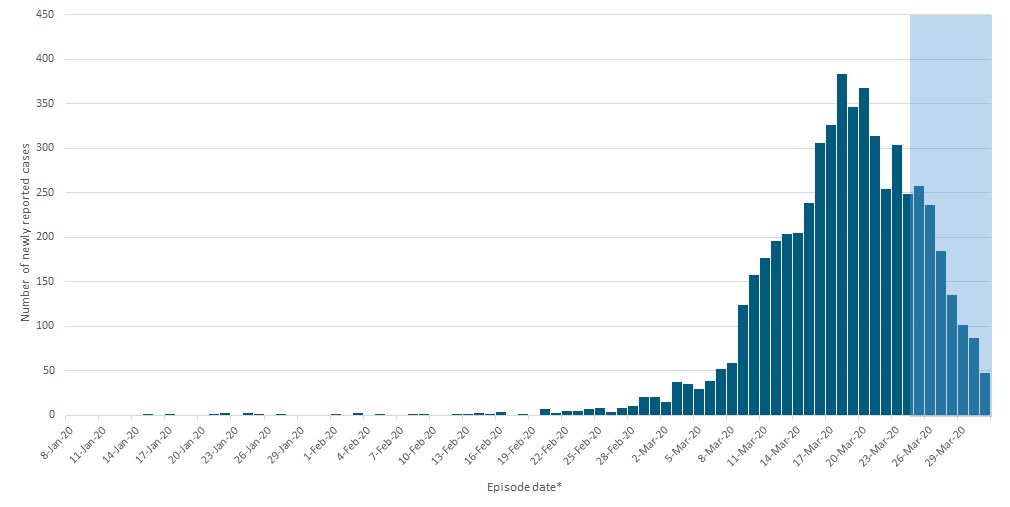Because infectious diseases have an incubation period during which an infected person remains in apparent good health, observable or reported infections follow actual infections by the duration of the incubation period. In the case of Covid-19, the incubation period is usually between one and two weeks. Thus the occurrence of Covid-19 herd immunity precedes the peak of observable infections by one or two weeks and the peak in reported deaths by as much as a month.
Many communities in North America and elsewhere, are reporting declining daily totals of new Covid-19 infections. That means that herd immunity has been achieved and the epidemic is dying. In New York City, herd immunity is reported to have been achieved with just 21% of the population having been infected.
The spread of the disease depends, however, on social dynamics and other measures to control disease spread. Currently, social dynamics in most communities have been radically altered by so-called social distancing in public places, lock-downs, and quarantines. The use of face masks and the use of disinfectant both indoors and out have also affected disease spread. Once such measures are relaxed or eliminated, disease spread among those still susceptible will occur more readily and the number of persons infected by each newly infected person will rise.
Relaxing or ending measures to control social dynamics thus raises the number of persons that each newly infected person infects to a number greater than one. As a result herd immunity is temporarily lost and the rate at which new infections occur will increase. However, the continued rise in the number of those infected will increase the proportion of the population with immunity, so that herd immunity will be regained, but with a higher proportion of the population infected.
The rise in the proportion of the population infected that occurs during transition from a period of controlled social interaction to a new period of normality is unavoidable. Adverse consequences of the transition to normality from the current period of controlled social interaction can be limited in two important ways.
First, by a progressive transition that prevents a spike in new infections that overloads hospital capacity to treat those who suffer serious adverse reaction to the disease.
Second, measures to to protect those most likely to suffer severe illness or death as a result of infection. Mostly, that means protecting the elderly, who account for the vast majority of those killed by Covid-19.
Also in need of special protection are those with conditions such as a respiratory disease, obesity or diabetes who may suffer particularly adverse reactions to the disease and should, therefore, be held in quarantine for their own protection until the epidemic ends.
Currently, the death rate due to Covid-19 in North America is probably close to 0.3% of those infected. Of those who have died, almost half in the United States, Canada, Italy and probably most other countries are elderly people suffering multiple other diseases and resident in a care home.
The future death toll due to Covid-19 could therefore be greatly reduced by better protecting the elderly, particularly those in care homes, from infection. The most important measure to achieve this would be repeated testing of care home workers and residents for Covid-19 infection to insure infected individuals are promptly quarantined.
Related:
David Stockman: "The Ripple-Effects Of The Government Lockdown Are Only Starting To Take Shape..."
